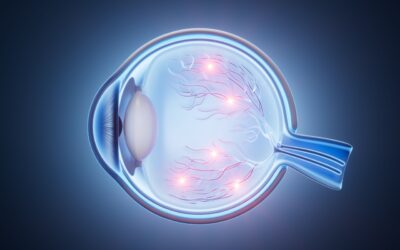Updated June 2025
As new modalities in drug development gain popularity, we are in an exciting place to treat and prevent complex disease states. Researchers have been making great strides in the development of oligonucleotides, otherwise known as “oligos.” Though these therapies present remarkable health solutions, including fighting cancer, developmental challenges make the process lengthy and convoluted.
Oligonucleotide therapeutics are state-of-the-art agents that target nucleic acids and proteins to inhibit gene expression or regulate protein functions. In other words, oligos target the assembly line of proteins by modifying mRNA to increase or reduce protein production and kill diseases. The oligonucleotide modality includes four varieties:
- Antisense Oligonucleotides (ASO)
- Small Interference RNAs (siRNA)
- Aptamers
- Micro RNAs (miRNA)
Each of these varieties must go through the standard preclinical activities designed to identify the lead candidate, optimize the formulation, scale up the manufacturing process, and determine the dosing route, frequency and exposure duration.
The History of Oligonucleotide Development
The concept of oligonucleotide drugs was introduced in the 1960s, and the first oligonucleotide therapeutic “Fomivirsen” was approved for cytomegalovirus retinitis by the U.S. Food and Drug Administration (FDA) in 1998.
The field experienced a resurgence in the 2010s with breakthroughs in chemical modifications (e.g., 2’-O-methyl, phosphorothioate linkages) and delivery systems (e.g., GalNAc conjugates), leading to improved stability, potency, and tissue targeting.
- By 2016, 13 oligonucleotides were approved for various medical applications by different regulatory agencies.
- By 2021, organizations have performed more than 200 clinical programs for multiple applications.
By 2025, the FDA has approved 21 RNA oligonucleotide therapeutics.
3 Pain Points with Oligonucleotide Development
Developers progressing an oligonucleotide must conquer additional challenges compared to a typical small or large molecule therapy, including stability, drug delivery and bioanalytical method development.
It is critical to understand these nuances and generate a preclinical strategy to investigate compounds thoroughly.
#1. Stability
Unlike some small or large molecule therapeutics, oligonucleotide molecules are relatively unstable. Thus, improving oligonucleotide stability and protecting from degradation is one of the most critical aspects in the early development phases. This is achieved through chemical modification.
Predicting stability can help de-risk a program by giving developers insight into the compound’s half-life, the intrinsic clearance, and human pharmacokinetic profiles. Scientists can apply and optimize various approaches to improve oligonucleotide stability.
For example, scientists can modify the chemical architecture of oligonucleotides to minimize one of the most significant hurdles in oligo development, which is nuclease-mediated degradation.
#2. Delivery
Drug delivery is another crucial element in developing oligonucleotide-based therapeutics. Most oligonucleotide drugs only work on nucleic acids, meaning they must enter the cell, distribute within the cell and reach effective concentration at the cognate site of the RNA target. As a result, effective delivery is critical and it often remains a developmental challenge that should be tested and optimized in early preclinical testing.
One example of preclinical optimization is coating oligonucleotide compounds with polyethylene glycol (PEG) to improve circulation in the bloodstream and increase cellular membrane penetration.
Read More: How to Evaluate the Preclinical Safety of Oligonucleotide Drugs
#3. Method Development and Bioanalytical Strategy
There isn’t a single bioanalytical strategy that can be implemented for every molecule in its class. In order to develop a method and outline a bioanalytical strategy, companies and their partners must develop and validate the proper bioanalytical assays to support oligo quantitation in bioanalytical matrices. It is imperative to choose the correct assays, which are primarily indicated by the individual molecule.
Read More: What Is Bioanalytical Testing & Method Validation
Chromatographic assays, like the liquid chromatography mass spectrometry (LC-MS) method, can help measure an oligo’s concentration in target organs, such as the liver and kidney. These assays can achieve high specificity, accuracy and precision.
But as the program progresses to later stages of preclinical and clinical studies, it needs more sensitive methods to measure lower concentrations in in vivo samples. Ligand binding assays (LBAs), such as the hybridization ELISA or qPCR, are helpful in this area. LBAs typically require a longer method development period because of the design, synthesis and necessary probe screening.
Read More: Hybrid-ELISA in the Bioanalysis of Oligonucleotide Drugs & Advancing Oligonucleotide Drug Development with Ligand Binding Assays in the Preclinical Stage
Typically, a bioanalytical strategy must consider multiple approaches to accomplish DMPK characterization.
Method selection should account for:
- The size of the oligonucleotide
- Sensitivity
- Matrices
- Throughput
- Development stage
It is helpful to speak with a laboratory testing partner about the purpose of the study and the structure of the molecule to help generate a proper bioanalytical strategy.
RELATED: 3 Must-Have Qualities of a Bioanalytical Method Development & Validation Partner
Regulatory Implications for Oligonucleotide Development
Oligonucleotides often operate at the intersection of small and large molecule therapies. Many decisions, such as designing a bioanalytical strategy, must be based on results from discovery studies and the prediction of clinical trials. Because there is no clear governing guidance about the bioanalytics of oligonucleotides, developers must implement the same outlook for their regulatory strategy.
It is critical for developers to partner with a laboratory that has experience in oligo bioanalysis and is familiar with the regulatory environment. Identifying the appropriate regulatory agencies, such as the U.S. FDA, the European Medicines Agency (EMA), the National Medical Products Administration (NMPA), or another regulator, from the onset helps set study expectations and allows the development process to proceed more efficiently.
Your laboratory testing partner should be able to strategize and plan your oligo development through the Investigational New Drug (IND) application.
The Future for Oligos
Bringing safe and effective oligonucleotides to market is a key strategy for drug developers looking to change the pharmaceutical landscape. Support from a trusted partner that can help implement a bioanalytical strategy makes it easier to tackle some of the bigger challenges associated with oligos.
Research and experience in oligonucleotide development have increased tremendously over the past decade, and as we learn more about how these molecules fight diseases, we get much closer to providing life-changing therapies to complex diagnoses.
Speak to a scientist today about your oligonucleotide bioanalytical strategy.
As a global company with operations across Asia, Europe, and North America, WuXi AppTec provides a broad portfolio of R&D and manufacturing services that enable the global pharmaceutical and life sciences industry to advance discoveries and deliver groundbreaking treatments to patients. Through its unique business models, WuXi AppTec’s integrated, end-to-end services include chemistry drug CRDMO (Contract Research, Development and Manufacturing Organization), biology discovery, preclinical testing and clinical research services, helping customers improve the productivity of advancing healthcare products through cost-effective and efficient solutions. WuXi AppTec received an AA ESG rating from MSCI for the fourth consecutive year in 2024 and its open-access platform is enabling around 6,000 customers from over 30 countries to improve the health of those in need – and to realize the vision that “every drug can be made and every disease can be treated.”


